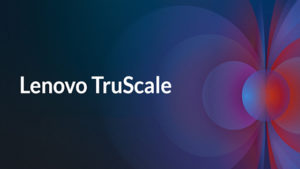 [SPONSORED CONTENT] Lenovo’s decade-long stream of advancements in liquid cooling technology for its HPC-class servers will be a focus of activity for the company at the SC22 conference (booth 1204) from Nov. 14-17 in Dallas. The company also will be demonstrating new server platforms powered by the latest AMD, Intel and NVIDIA processors, along with the company’s TruScale HPC-as-a-Service capabilities and other advanced computing developments.
[SPONSORED CONTENT] Lenovo’s decade-long stream of advancements in liquid cooling technology for its HPC-class servers will be a focus of activity for the company at the SC22 conference (booth 1204) from Nov. 14-17 in Dallas. The company also will be demonstrating new server platforms powered by the latest AMD, Intel and NVIDIA processors, along with the company’s TruScale HPC-as-a-Service capabilities and other advanced computing developments.
Let’s start with water cooling.
With its Neptune™ line of cooling capabilities, Lenovo has remained a boat length ahead in liquid cooling innovation since its first 2012 installation at the Leibniz Supercomputing Centre (LRZ)in Munich. Since then, the company has helped develop customers’ – and the industry’s – understanding and use of water-cooling technology. Once considered a counter-intuitive and risky proposition, it is now accepted in the supercomputing mainstream as servers have become denser and consume more energy, producing much more heat, and as liquid cooling has been proven safe and cost-effective at HPC sites around the world.
Commenting in a recent article on this site, Scott Tease, Lenovo’s Vice President and General Manager, HPC & AI, said the LRZ installation was a high stress episode. “We were freaking out a little bit, (the LRZ system) was 9700 nodes, liquid cooled for the first time ever, and it got us nervous,” he told StorageReview in a podcast interview. “But it’s been an incredible story, and ever since, the customer has been happy. Some of those nodes are just now coming out of production…, that’s how long it’s been in production. But what we’re seeing with Neptune™ and with liquid cooling in general is that the reasons to go towards liquid are even (stronger) than a decade ago.”
 He said LRZ had compelling cost motives for making the jump to liquid, since power costs are two times more in Germany compared to the U.S. “So, every time they could drive power consumption out it had a pretty big benefit for them on their energy bill,” Tease said, with savings amounting to hundreds of thousands of Euros per month. Bottom line: LRZ reduced their energy costs by 30 percent.
He said LRZ had compelling cost motives for making the jump to liquid, since power costs are two times more in Germany compared to the U.S. “So, every time they could drive power consumption out it had a pretty big benefit for them on their energy bill,” Tease said, with savings amounting to hundreds of thousands of Euros per month. Bottom line: LRZ reduced their energy costs by 30 percent.
The theme for this year’s Supercomputing show is “HPC Accelerates.” At their booth, Lenovo combines that with the 10th anniversary of the Neptune™ portfolio with the tag line: “Keep Cool and Accelerate.” Lenovo will be showing the history of its liquid cooling technology going back to its roots at IBM, and then with Lenovo and the Neptune™ brand. Lenovo has expanded liquid cooling beyond the CPU/memory complex to include PCIe, storage, power supplies and, now, GPUs. Lenovo also will announce Neptune™ for AMD CPUs.
It’s all part of the Lenovo’s commitment to sustainable computing, a comprehensive strategy covering pre-delivery to operations and cluster retirement – and includes the Lenovo Carbon Offset program from laptops to supercomputers.
In fact, the Lenovo booth at SC22 will display the full array of server capabilities: liquid cooled systems, air cooled systems and liquid-assisted air-cooled systems.
Also at the Lenovo booth, the company will be featuring the latest systems based on AMD’s 4th Generation EPYC processors, (“Genoa”); Intel’s next-generation Xeon CPU (“Sapphire Rapids”) and “Ponte Vecchio” GPU; and NVIDIA’S Hopper platform, the company’s GPU datacenter microarchitecture.
Speaking of NVIDIA, Lenovo will be showing live demos of NVIDIA OVX computing systems powered by the NVIDIA Ada Lovelace GPU architecture and enhanced networking technology for real-time graphics, AI and digital twin capabilities. The systems are designed to build 3D virtual worlds using 3D software applications and to operate immersive digital twin simulations in the NVIDIA Omniverse Enterprise platform for metaverse applications.
 In addition, Lenovo will feature TruScale, an HPC-as-a-Service for delivery of additional compute, storage and network resources by positioning those resources in the data center, ready to be incorporated into the cluster as needed. Called XtraRack, it allows customers to rapidly add capacity, enabling organizations to be more competitive in grant situations “by having resources now, not six months from now,” the company said.
In addition, Lenovo will feature TruScale, an HPC-as-a-Service for delivery of additional compute, storage and network resources by positioning those resources in the data center, ready to be incorporated into the cluster as needed. Called XtraRack, it allows customers to rapidly add capacity, enabling organizations to be more competitive in grant situations “by having resources now, not six months from now,” the company said.
Lenovo’s commitment of “From Exascale to EveryScale,” emphasizes its commitment to help customers of any size leverage the technology of the exascale era, along with the company’s embrace of open standards – standard racks, standard storage, standard fabric, standard processing, and open standard software.
Lenovo also will be showing the graphics capability of its Lenovo ThinkStation workstations with a VR demo driving an Aston-Martin automobile. If you want James Bond music, it’s an extra charge.
And the company will have subject matter experts at their booth to discuss the company’s genomics, climate, energy and storage solutions.
For more information, check out the Lenovo Infrastructure Solutions Group events page.




